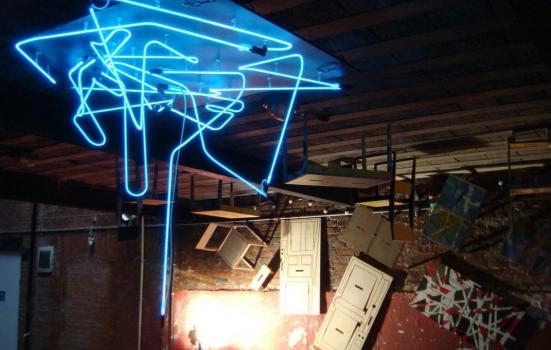Toby Lowe believes that discussions about the quality of work by artists in the participatory sector are useful for others who operate in similar uncertain and complex circumstances.

How do people improve their practice when that practice involves making a series of difficult judgments in complex circumstances? This is one of the questions I am wrestling with, and in particular how it relates to those people who help to create social change in the public and voluntary sectors.
There was a strong sense that involving participants in a process of critical reflection about the work was a key factor in producing strong work
While I worked at Helix Arts we developed a peer reflection tool for participatory artists which includes a practice called ‘Critical conversations’, piloted by artists who are part of the Artworks North East pathfinder programme. These conversations gave artists the opportunity to reflect critically on what quality meant in their practice. What they uncovered is of interest not only to the participatory arts sector but also gives important clues on how to improve any type of practice which operates in conditions of uncertainty. The themes that the artists explored included:
- The theoretical and philosophical underpinnings of participatory practice which link to relational and dialogical aesthetics.
- The relationship between participatory art and social change, particularly the sense that it can help to achieve social change but not if it is used as a sticking plaster. It has to be done authentically and with rigour.
- The conditions required for good participatory work, such as dialogue with (and challenge to) commissioners, understanding context, time to develop meaningful relationships and access to quality materials and equipment.
- The roles that artists play when working on participatory projects, from directorial approaches to facilitating the creativity of others. This also exposed questions related to different roles, including ownership of the work and how consent is negotiated.
- The importance of the artist’s role in bringing professionalism, discipline and rigour.
- Relationships between artists, participants and different types of audiences, including audience needs and challenging audience expectations.
- Markers of quality - professionalism, radical listening, change in the artist; change in group dynamics and the technical skill level of participants; in the aesthetic of the work produced, the value of subtlety, nuance, originality and the avoidance of cliché.
The artists also reflected on a range of techniques they had used to build relationships. A key feature was that they started by listening, understanding and responding to context, rather than by pushing their perspective. This starts the relationship on a pathway where the artist conveys their passion for their practice. The starting point was also a questioning, non-expert position which treats the participants (and their wider context) as the source of expertise in the work. There was a strong sense that involving participants in a process of critical reflection about the work was a key factor in producing strong work. Participatory practice is both highly structured (with both individual workshops and a whole programme of workshops) and highly fluid, requiring artists to respond creatively to ‘failure’ (which often brings exciting new possibilities) and to other forms of change. Artists also discussed how to recognise the ‘ignition point’ of participatory projects - that moment when the core idea of the work appears. There are also unresolved challenges that artists face, such as when and how much to push participants, when to intervene, and questions of the relationship between consent and censorship.
These reflections take the debate on quality in participatory arts forwards, but there are other lessons to learn from this process which extend way beyond that discipline into any field in which people are routinely required to make difficult judgements in situations of uncertainty. The recognition that the real world is uncertain and complex is gaining ground in management practice in many areas. The impact of this recognition is an increased understanding that simple, target-based performance management mechanisms are not effective ways of ensuring that people do the right job well. Instead, people are developing mechanisms for peers to reflect with one another about the uncertainties and complexities they face (see the work we have we done at Newcastle University on learning communities).
It is not surprising that the arts are ahead of the game, as this is the field of human exploration that embraces uncertainty as part of its core. Making any work of art requires difficult practical and aesthetic judgements in relation to a complex and dynamic environment. Artists have had to find ways to prosper in such contexts. In the past few years, there has been a concerted drive to professionalise management in the arts world by adopting the business practices of other sectors. Many of these were necessary improvements, but this should not be a one-way transfer of management practice. I feel that the lesson from critical conversations and peer reflection is that in their handling of uncertainty, the arts have something crucial to give back.
Toby Lowe is Senior Research Associate at Newcastle University Business School.
www.ncl.ac.uk
The full report of the critical conversations is available here.




